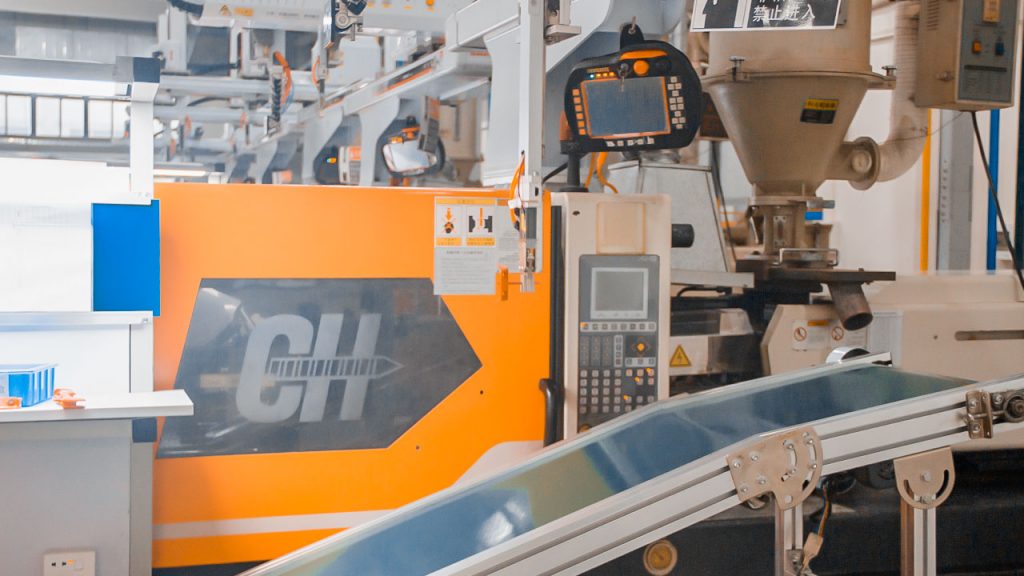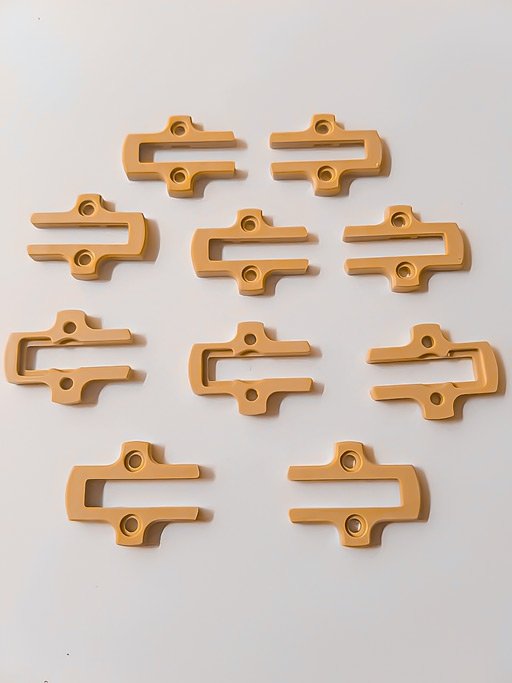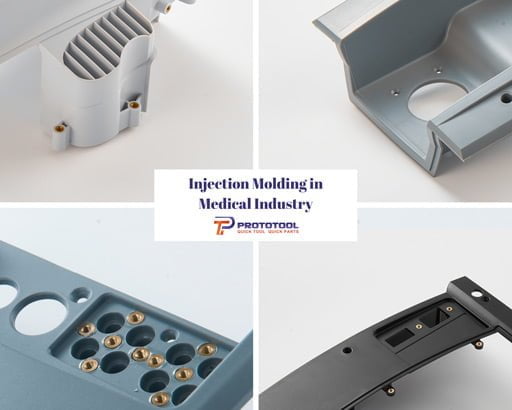O fast-manufacturing sector is now through a period of substantial change. Due to this industry’s fast pace, things must be sent as quickly as possible. Product designers, engineers, and manufacturers are entrusted with ensuring that the quality of their products is consistent. Low volume injection molding is a part of manufacturing oriented toward addressing consumers’ needs.

With the use of this production method, manufacturers may make comparable, low-volume plastic components with consistent characteristics and qualities. Manufacturers are presently implementing novel operation techniques to get a competitive advantage in the marketplaces, which are continually changing. This thorough book will teach you all there is to know about low-volume injection molding.
What is Low Volume Injection Molding?
Low-volume injection molding is the optimal manufacturing technique for producing fewer than 100,000 units of a given component. Before committing to a long-term molding setup, it is used to mass-produce identical components; however, certain low-volume plastic parts may never need larger-scale manufacturing; therefore, it is utilized before making such a commitment. This molding is one of the most prevalent techniques used in the current manufacture of plastics.
MPM equipment is best suited for usage with plastic-molded objects with modest production quantities. They are cost-effective, need a small footprint, and can use low-cost tools with a single cavity. Low-Volume injection moulding machines are ideal for prototype, bridge manufacturing, and ASTM specimens, among other uses. These devices can also accommodate requests for lesser quantities.
Low Volume Injection Molding VS Traditional Injection Molding
The production rate is one of the most distinguishing features of low-volume injection molding compared to traditional injection molding. Traditional injection molding requires much more time than low-volume injection molding.
Additionally, the mold designs for conventional injection molding are more complex, which may increase the time necessary to create the components. Due to this, preferring low-volume injection molding over more typical methods has many advantages.

Advantages Of Low Volume Injection Molding
One of the most necessary processes in the world of rapid manufacturing is Low-Volume plastic injection molding. The model’s continuous development may reduce production and shipping times. Unfortunately, the standard approach does not get results as quickly as you’d want.
However, there are several ways in which the production process features go against the plastics market’s requirements. The time needed to manufacture the parts may grow much more if the mold design is complicated. Conversely, low-volume injection moulding is a practical method for swiftly resolving such concerns. To name only a few of its numerous advantages:
- Uses Softer Aluminium Tooling
In contrast to the more traditional method of molding, low-volume injection molding does not need the use of hardened steel mold tooling. As an alternative, it utilizes aluminum, which can be shaped more easily in molding. Aluminum’s hardness is much lower than that of steel. It makes using it a lot less complicated and quick, and easy.
The heat treatment process may be streamlined by skipping the annealing step when aluminum is used for tooling. Steel tools often need annealing to remove internal tensions and properly harden the metal. Furthermore, most surface treatments used for steel molds are also suitable for aluminum molds.
- Quality Parts Manufacturing
Although the tooling material used in low-volume injection molding is softer, the resulting products are long-lasting and functional. This production technique may be used to assemble many different products. Furthermore, aluminum transfers heat to steel at a far faster pace than steel does. The enhanced conductivity makes the precise positioning of the cooling lines moot. That way, it may add more mold parts. Consequently, low-volume injection molding bridges the gap between prototyping and mass production by providing more design flexibility.
Low Volume Injection Molding Cost
Many people falsely believe that they may save money simply by buying stuff. Although this is often the case, there are situations where it is not. While this may be the case with household goods, it is less certain with things utilized in the office. The materials used in production significantly impact the price tag attached to each final product. High-volume injection molding shops may sometimes have to meet minimum order standards. They may need to do this to cover their costs and make up for the high costs incurred during production.
Yet, low volume injection molding often has a far lower overhead than high-volume injection molding. In this case, manufacturers may crank out goods for sale without demanding minimum orders from buyers. That might be useful if you’re looking at plastic batch manufacturing on a small quantity of injection molding. Moreover, you won’t risk buying from a supplier that hasn’t updated its stock in a while. Because of all of these reasons, costs may be drastically cut down.
- Shorter Lead Times
The manufacturing approach not only helps keep the price of producing plastic components down but also helps boost the output of those components. It uses a technology that expedites price quotes for customer orders. The program also examines the component’s design to ensure reliable and rapid manufacturing.
Because aluminum is such a malleable metal, casting molds from it requires much less effort and time. You may increase the material’s longevity without resorting to hardening. Since the mold can now be sent to the factory, production can start in earnest. This is helpful for product teams of all sizes since it may shorten the time it takes to get a product to market.
- Flexibility In Design
Small-scale injection molding focuses on producing fewer units in a shorter time. Given this, a business’ choice to make minor adjustments or changes to the design won’t have much of an impact. This method allows for iterative refinement of the product before it reaches the consumer.
High-quality plastic injection molding offers immediate feedback, which improves the product’s manufacturability. It allows fresh ideas to be tested in various industries before costly produção em massa is required.
- Bridge For Scale
A company that hopes to produce its items in large numbers in the future should start manufacturing plastic on a modest scale. It helps smooth the transition from prototype to full-scale production. Making a prototype that is suitable for mass production is now possible with the help of this technology. Beyond that, it helps improve both the product and the process.

Disadvantages Of Low Volume Injection Molding
- Net Cost Of Tooling
While the cost of tooling will be less in isolation if they eventually switch to medium or high-volume molding, the overall cost will increase, Instead of jumping into a more permanent solution immediately.
- Shorter product Life
The savings may not always be worthwhile when factoring in the decrease in product lifespan. Our firm does not propose aluminum tooling until the product life is 20,000 components or fewer due to many design concerns that must be considered for this requirement.
- Design Constraints
More design constraints exist for low-volume tooling (often constructed of aluminum) than for high-volume tooling (due to metal’s inherent durability issues). A design that works well in a steel mold may prematurely wear out an aluminum mold owing to its features.
Low Volume Injection Molding Applications
Three of the most prevalent uses for low-volume injection molding are:
- Rapid prototyping
- Small Quantity injection molding
- On-demand or custom injection molding
Alternatives for Low Volume Injection Molding
- Impressão 3D
This process is one of the most cutting-edge approaches to producing high-quality goods in small batches. Three-dimensional printing reduces production times and costs by eliminating the need for mold creation at the outset. Layered surfaces are common on 3D-printed objects. However, the surfaces may be sanded and painted easily to provide the required surface quality.
- Maquinação CNC
Maquinação CNC is one of the oldest manufacturing methods, but it is still widely regarded as one of the most reliable ways of making things in low to medium quantities. It’s versatile, and you may apply it to various materials. It’s useful for making accurate molds, patterns, or dies that may be put to use in a wide range of manufacturing procedures.
- Thermoforming
Another effective technique involves creating molds to hold a thin plastic sheet in place while it is heated. Once the plastic has been heated, it may be shaped by adding pressure, a vacuum, or another mechanical force. The plastic sheet will conform to the shape of the mold, and any surplus will be cut away. Pressures and temperatures at the bottom of the scale are required for this method. There are a few inexpensive things you’ll need to build the mold.
- Urethane Casting
Another excellent alternative to prototype injection molding is fundição de uretano. Compared to the alternative process, fundição de uretano stands out since no up-front costs are incurred. In order to finish the procedure, a master pattern of the product must be fashioned using either high-resolution 3D printing or CNC machining.
Final Thoughts
Low-Volume plastic injection molding is often used throughout the prototype and functional testing stages of product development. Finally, small-batch manufacturers like Apple e Tesla may use low-volume plastic injection molding to make finished parts. There are a few major considerations that must be considered when developing components for low-volume injection molding. The overall complexity, the part’s draft, espessura da parede, and surface polish are all of these things. Manufacturers may save money on tooling and time spent producing their goods by eliminating unnecessary surface finishes from their molds.










